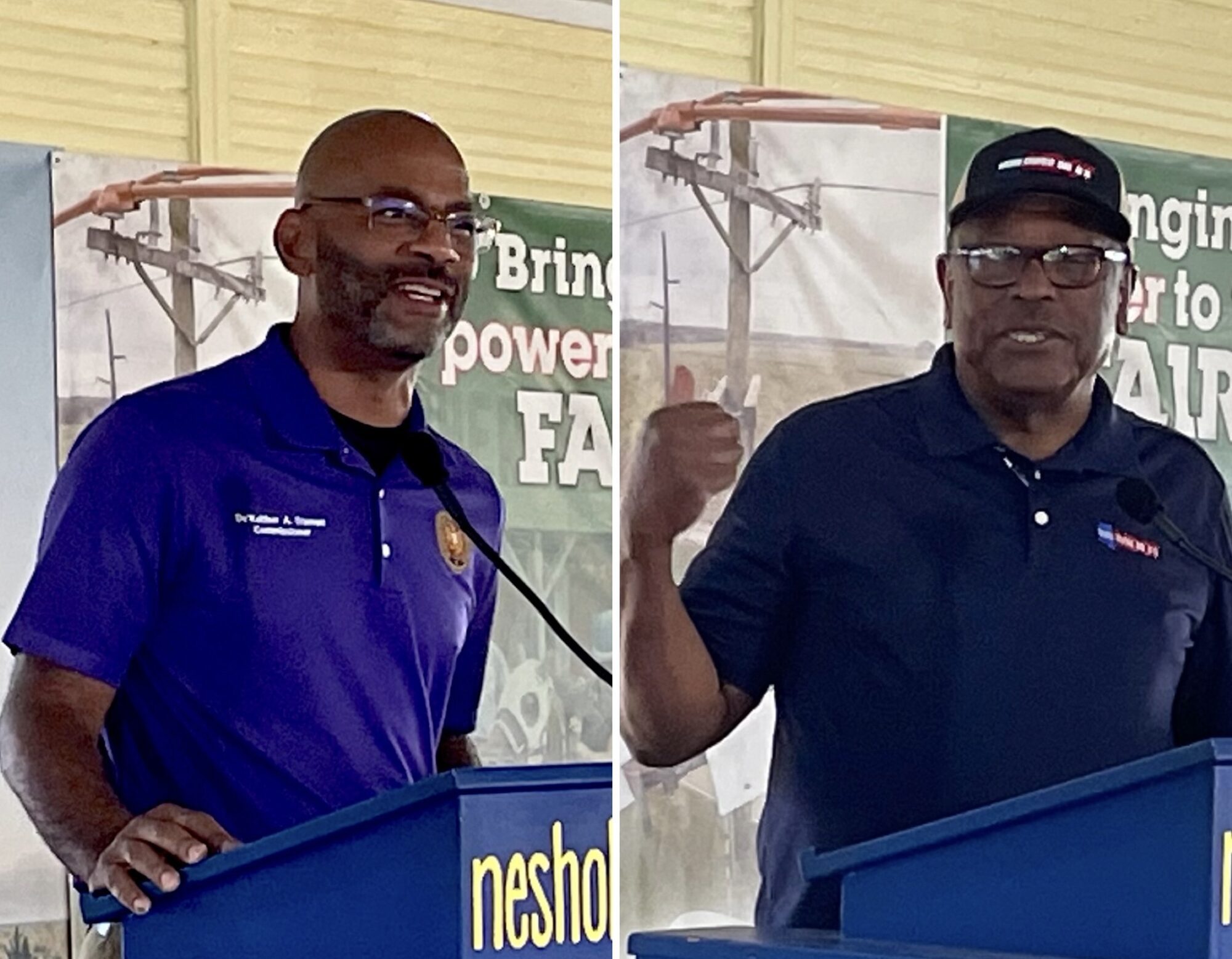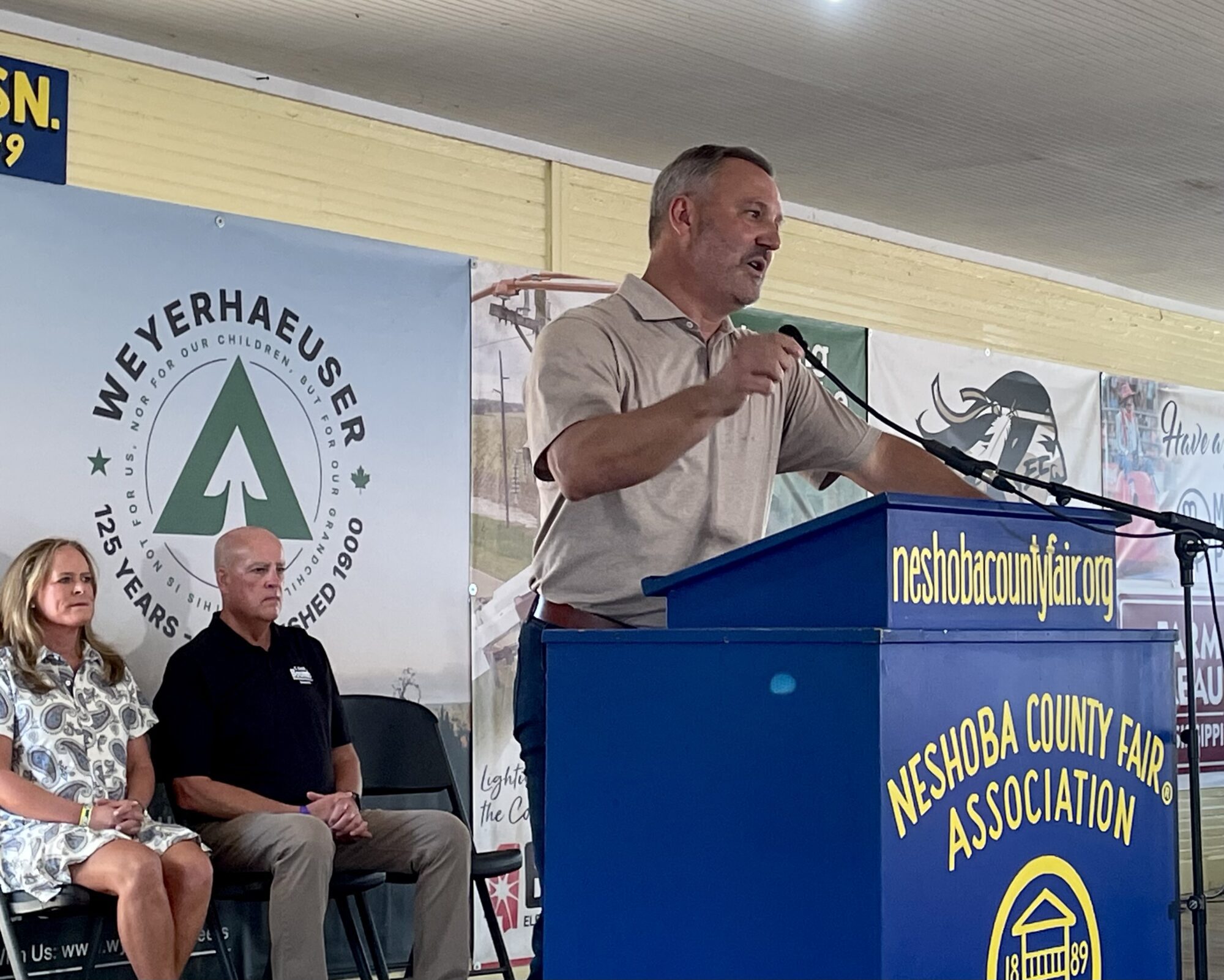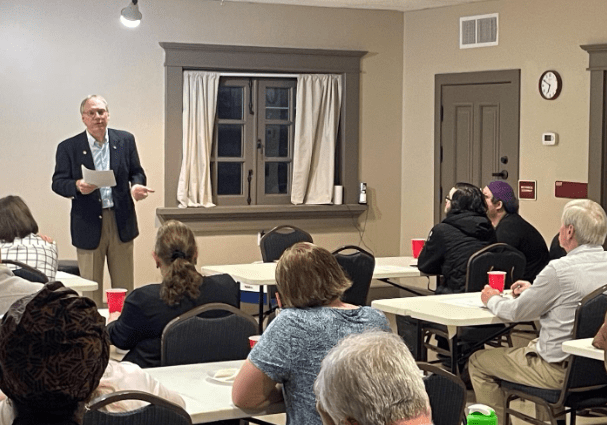
PSC Commissioner DeKetiher Stamps (left) and Transportation Commissioner Willie Simmons (right) speak at the 2025 Neshoba County Fair (Photos by Frank Corder)
- Central District Public Service Commissioner DeKeither Stamps and Transportation Commissioner Willie Simmons take the stage at the Neshoba County Fair.
Attendees at the Neshoba County Fair had the opportunity to hear from the central district Transportation Commissioner and Public Service Commissioner on Thursday.
Public Service Commission
Public Service Commissioner De’Keither Stamps (D) spoke about the need for more “Davids” in the public utility space, a reference to the Book of Samuel in the Bible. With so many current public works, utility and other trained personnel retiring, there is a need for a younger generation to learn those skills and continue the work.
“The time to get our young people off the couch is now,” Stamps said, telling the crowd under the Founders Square Pavilion, “I’m asking you to do a little couch kicking.”
Without enough workers to fill positions in those areas, cities and counties are forced to hire contractors. Stamps suggested internships as a way to entice more young people to give those fields a look.
Another need, Stamps said, is housing. He explained that when there is no place for young people to live as they start their careers they move out of state. High density housing could be a method to meet the need, Stamps believes. He suggested for every 500 high school graduates, a community should build 50 more units of housing.
“They don’t have to leave Neshoba County,” Stamps said. “Let’s build them a place to live.”
He also highlighted the energy and economic development work being done by the PSC as the commission works to ensure reliable, affordable energy for residents and businesses alike.
Transportation Commissioner
Willie Simmons (D), the Central District Transportation Commissioner, told attendees of the Fair that through the increase in the gas tax provided by the Legislature this session there is now a way to pay for its previous promise to ensure there is a highway within 50 miles of every Mississippian.
Simmons estimates when the totality of the 9 cent per gallon increase goes into effect in three years, it will generate an additional $200 million in revenue for the Mississippi Department of Transportation. He said commissioners will use the funds to build and maintain the state’s roads and bridges.
Simmons said the extra money is desperately needed to support capacity projects in the state, especially in areas where new industries are expected to set up shop.
While the extra money will be beneficial to MDOT’s efforts to improve the state’s road and bridge infrastructure, Simmons said about $400 million is still needed to meet all of the department’s needs.
“But we are not going to put a lot of pressure on them [the Legislature] because we are so grateful for what they have done at this point,” Simmons added.
One such project currently underway is in Lauderdale County near an industrial park where Southern Pipe operates and the construction of a data center is expected. The work will make it easier for 18 wheelers to access the area.
Crews are also expected to return to a five-mile area along Highway 145 due to complaints.
“In fact, we already did an amendment to the contract and we’re getting ready to come back and pave it, that five mile stretch that citizens have been complaining about over by the dollar store on 145,” Simmons described.
Paving is also planned for Interstate 20 in Lauderdale County and the counties to the west, all the way from Meridian to the Scott County line.
Motorists who travel Highway 80 should also be aware of work planned to repair or replace six bridges along the highway. Simmons said that work is expected to disrupt traffic.
In addition, four-laning of Highway 19 from Meridian to Philadelphia should be completed next year.
The state’s Emergency Road and Bridge Repair program is also working to ensure the safety of the bridges since heavy trucks need to travel county roads.
“We need all of our bridges up to standards in order to get our goods to and from their destination,” Simmons said.
He estimates that since the program’s implementation in 2018, about 85 percent of the state’s wood piling supported bridges have been replaced.










